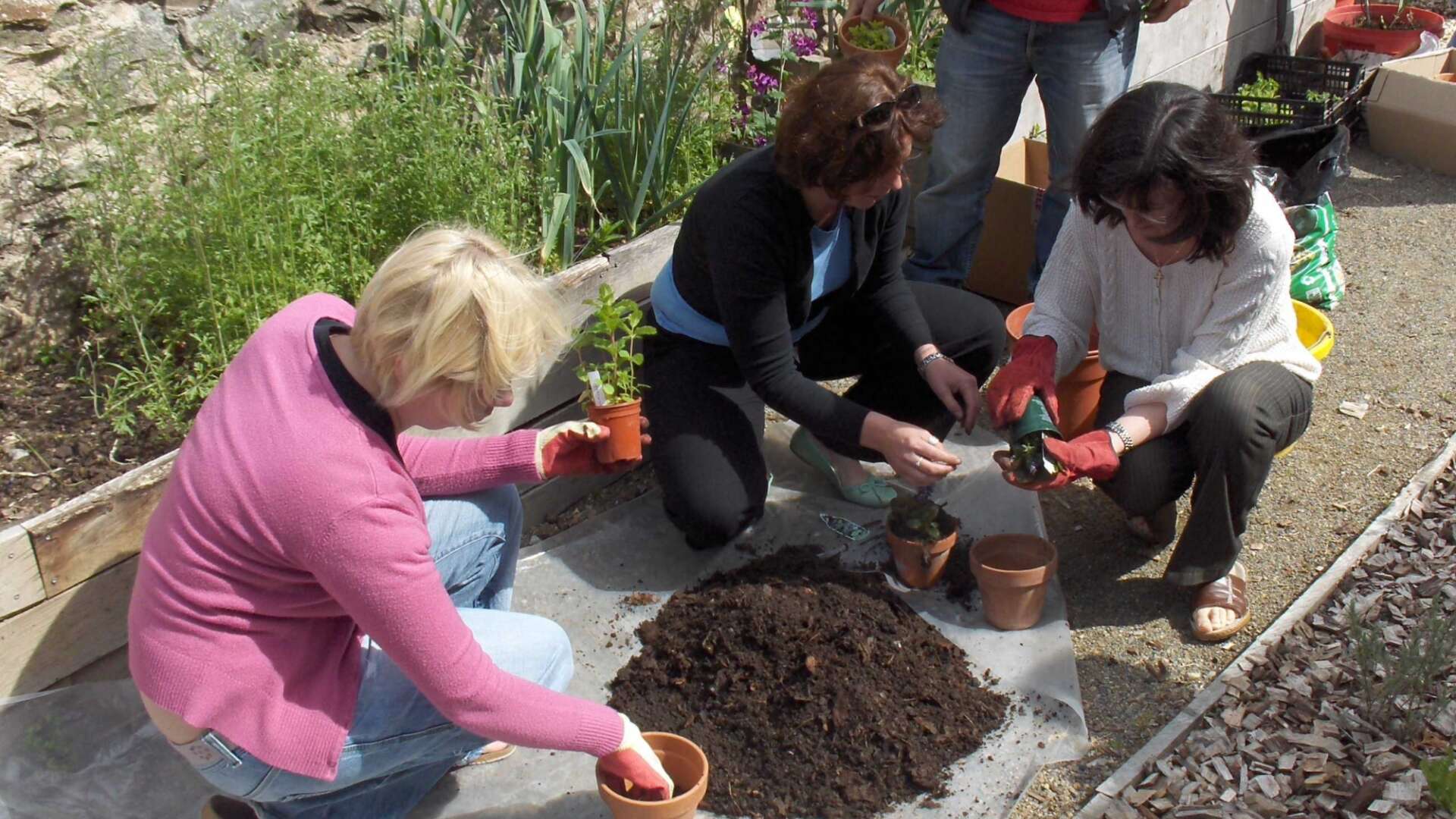Composting
Garden compost or potting compost?

If you go to a garden centre to buy compost, the chances are you will be buying a bag of commercially produced growing mix. Big names such as John Innes and ‘own brands’ leap out at you.
But is this different to your own homemade compost? And how do you choose from the bewildering array of bags on offer?
To help your organic growing, we unpack the terms compost, potting compost or growing mixes, and soil improvers - and we compare their uses. Most importantly, we help you make your own organic compost or growing mix which perfectly suits your plants’ needs – from seed to veg to perfect hanging basket!
Homemade or garden compost
is made from rotted waste materials such as plant foliage and stems, vegetable and fruit waste, grass cuttings and cardboard and paper. It’s perfect as a soil improver.
It does this in three ways:
- Its bulky format gives the soil a good structure which is open and aerated. This not only helps water and plant roots to penetrate but also allows soil life such as worms and microbes to move freely.
- It also holds moisture well, because of its bulk
- It adds nutrients to the soil to feed soil life and help plant health
Garden compost is free, and it's the perfect, environmentally friendly way to dispose of your kitchen waste! See here for how to make your own compost.
However, you wouldn’t use garden compost for seed sowing or to root cuttings (it has too many nutrients) and its bulk would make it quite heavy for hanging baskets. If you want to turn it into potting compost, it’s important to mix it with other things – sand, grit, topsoil or leafmould. See advice on container growing and how to make peat free potting composts.
Potting composts
If you don’t have the materials to make your own potting or seed compost, then there is no harm in buying some. Potting compost in bags is usually lighter in texture than homemade garden compost. It is created for growing plants in containers – not as a soil improver – and there are particular mixes for seed sowing, cuttings or ericaceous (lime hating) plants.
However, you must make sure the bag you buy is labelled ‘peat free’ and certified for use in organic growing. Always ask at your garden centre, or check if you are buying online. (And beware that ‘organic’ to some means the materials are natural, not that they are suitably sourced for organic growing.)
Find out more about why to avoid peat.
There are two basic sorts of commercial potting composts, both will contain peat unless specified otherwise:
- soil (loam) based mix – often created to a formula devised by the John Innes Foundation
- multi-purpose compost, which comes in an array of different types and bag sizes.
Loam mix. The John Innes Foundation researched and devised the ideal recipe for various growing mixes according to the plant’s needs. The basic mix includes sterilised loam, peat (yes, peat again ….), coarse sand or grit, and fertilisers. You can easily recreate your own, peat free, loam mix. See here for advice.
Multipurpose potting mix. These are often sold as ‘Own Brands’. They do not contain loam (or very little) but include a variety of materials, predominantly peat or peat substitutes (coir, coconut husks etc). They do not work as a soil improver, nor for seed sowing (the texture is too coarse) and often they don’t hold moisture well. However, because they are light they are excellent for hanging baskets and other annual potting needs. Some have ‘added John Innes’ which probably means a proportion of loam and added nutrients.
Again, you can easily recreate your own peat free potting mix, see how to here.
Soil improvers and other materials
Alongside the composts and potting mixes there are also:
- sacks of topsoil (for topping up the garden or filling raised beds)
- well-rotted manure and similar soil improvers (for digging into flower beds and enriching the vegetable patch)
- bark chippings (for mulching a path to suppress weeds)
- sand, grit and gravel (for working into heavy soil to improve drainage)
Join Garden Organic!
By becoming a Garden Organic member you can join thousands of people who are already leading the movement for an organic and sustainable future for us all. And get great member benefits!
Join today